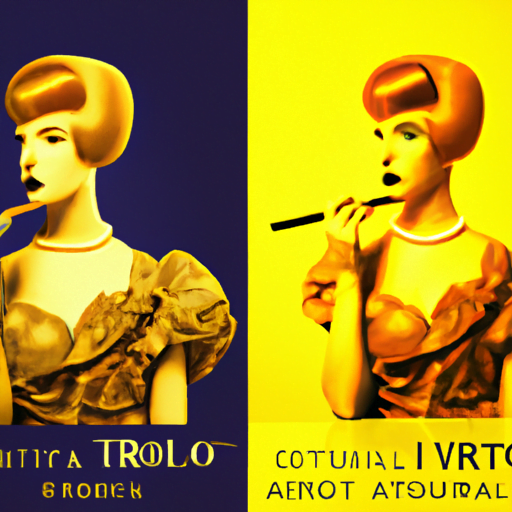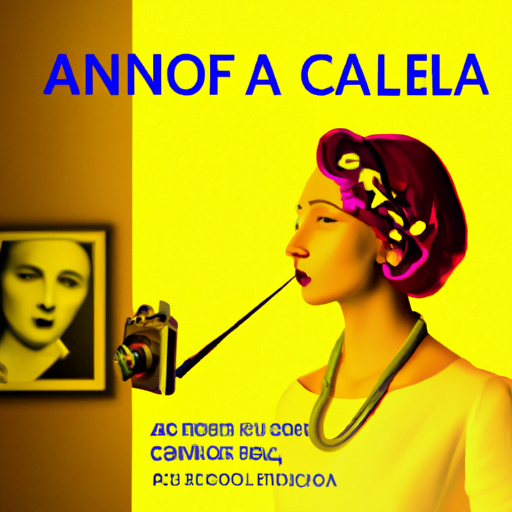
-
Table of Contents
The Influence of Art Nouveau on Modern Design

Art Nouveau, a popular art movement that emerged in the late 19th century, continues to have a significant influence on modern design. This artistic style, characterized by its organic forms, intricate details, and emphasis on nature, revolutionized the way we perceive and create art. From architecture to furniture, fashion to graphic design, Art Nouveau has left an indelible mark on the world of design. In this article, we will explore the key elements of Art Nouveau and examine its lasting impact on modern design.
1. Origins and Characteristics of Art Nouveau
Art Nouveau, meaning “new art” in French, originated in the late 19th century as a reaction against the industrialization and mass production of the time. It sought to break away from the rigid and ornate styles of the past, such as Neoclassicism and Victorianism, and embrace a more natural and organic aesthetic.
Key characteristics of Art Nouveau include:
- Curvilinear forms inspired by nature, such as flowers, plants, and flowing lines
- Whiplash curves and asymmetrical compositions
- Ornate and intricate details
- Use of new materials and techniques, including iron, glass, and ceramics
- Emphasis on craftsmanship and handmade objects
2. Art Nouveau in Architecture
One of the most prominent areas where Art Nouveau made its mark was in architecture. Architects like Victor Horta, Antoni Gaudí, and Hector Guimard embraced the organic forms and intricate details of the style, creating buildings that were both functional and visually stunning.
For example, the Casa Batlló in Barcelona, designed by Gaudí, showcases the characteristic curvilinear forms and vibrant colors of Art Nouveau. The building’s facade resembles the scales of a dragon, with its undulating lines and mosaic tiles.
Another notable example is the Hôtel Tassel in Brussels, designed by Horta. This building features a combination of iron, glass, and stone, with intricate ironwork and stained glass windows that exemplify the attention to detail and craftsmanship of Art Nouveau.
3. Art Nouveau in Furniture and Decorative Arts
Art Nouveau also had a significant impact on furniture and decorative arts. Designers like Louis Comfort Tiffany and Émile Gallé embraced the organic forms and intricate details of the style, creating pieces that were both functional and works of art.
Tiffany’s iconic stained glass lamps, with their vibrant colors and nature-inspired motifs, are a perfect example of Art Nouveau in decorative arts. These lamps became highly sought after and are still considered timeless pieces of design today.
Gallé, a French glass artist, created intricate vases and furniture pieces that showcased the delicate beauty of nature. His pieces often featured floral motifs and were made using innovative techniques, such as acid etching and marquetry.
4. Art Nouveau in Fashion and Graphic Design
Art Nouveau also had a significant influence on fashion and graphic design. The style’s emphasis on flowing lines and intricate details translated well into textiles and graphic compositions.
One notable example is the work of Alphonse Mucha, a Czech artist known for his iconic posters. Mucha’s posters often featured elegant women with flowing hair and intricate patterns, capturing the essence of Art Nouveau.
In fashion, designers like Paul Poiret embraced the flowing lines and natural motifs of Art Nouveau. Poiret’s designs featured soft, draped fabrics and intricate embroidery, reflecting the organic forms and attention to detail of the style.
5. The Lasting Impact of Art Nouveau on Modern Design
Art Nouveau’s influence can still be seen in modern design today. Its emphasis on organic forms, intricate details, and craftsmanship continues to inspire designers across various disciplines.
For example, the work of renowned architect Frank Gehry often incorporates curvilinear forms and innovative use of materials, reminiscent of Art Nouveau. Gehry’s Guggenheim Museum in Bilbao, Spain, with its undulating titanium panels, echoes the organic and dynamic nature of Art Nouveau architecture.
In graphic design, the use of flowing lines and intricate patterns can be seen in contemporary logos and branding. Companies like Airbnb and Pinterest have embraced the organic and whimsical aesthetic of Art Nouveau in their visual identities.
Furthermore, the revival of Art Nouveau-inspired furniture and decorative arts is evidence of its lasting impact. Designers and collectors continue to appreciate the craftsmanship and intricate details of Art Nouveau pieces, incorporating them into modern interiors.
Conclusion
Art Nouveau, with its organic forms, intricate details, and emphasis on nature, has had a profound influence on modern design. From architecture to furniture, fashion to graphic design, the style’s characteristics continue to inspire and shape the way we create and perceive art. By breaking away from the rigid styles of the past and embracing a more natural aesthetic, Art Nouveau revolutionized the world of design and left a lasting legacy that can still be seen today.
